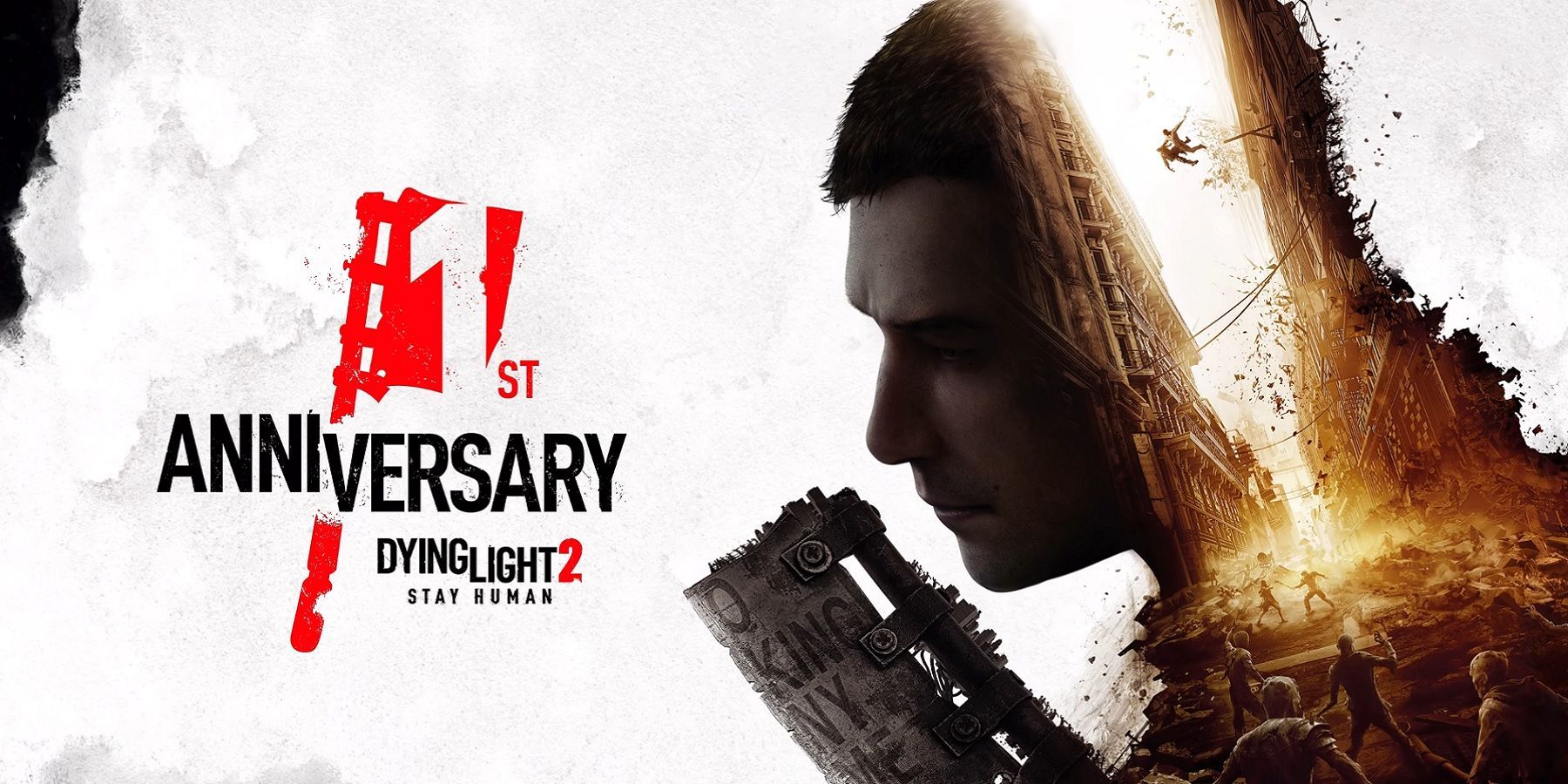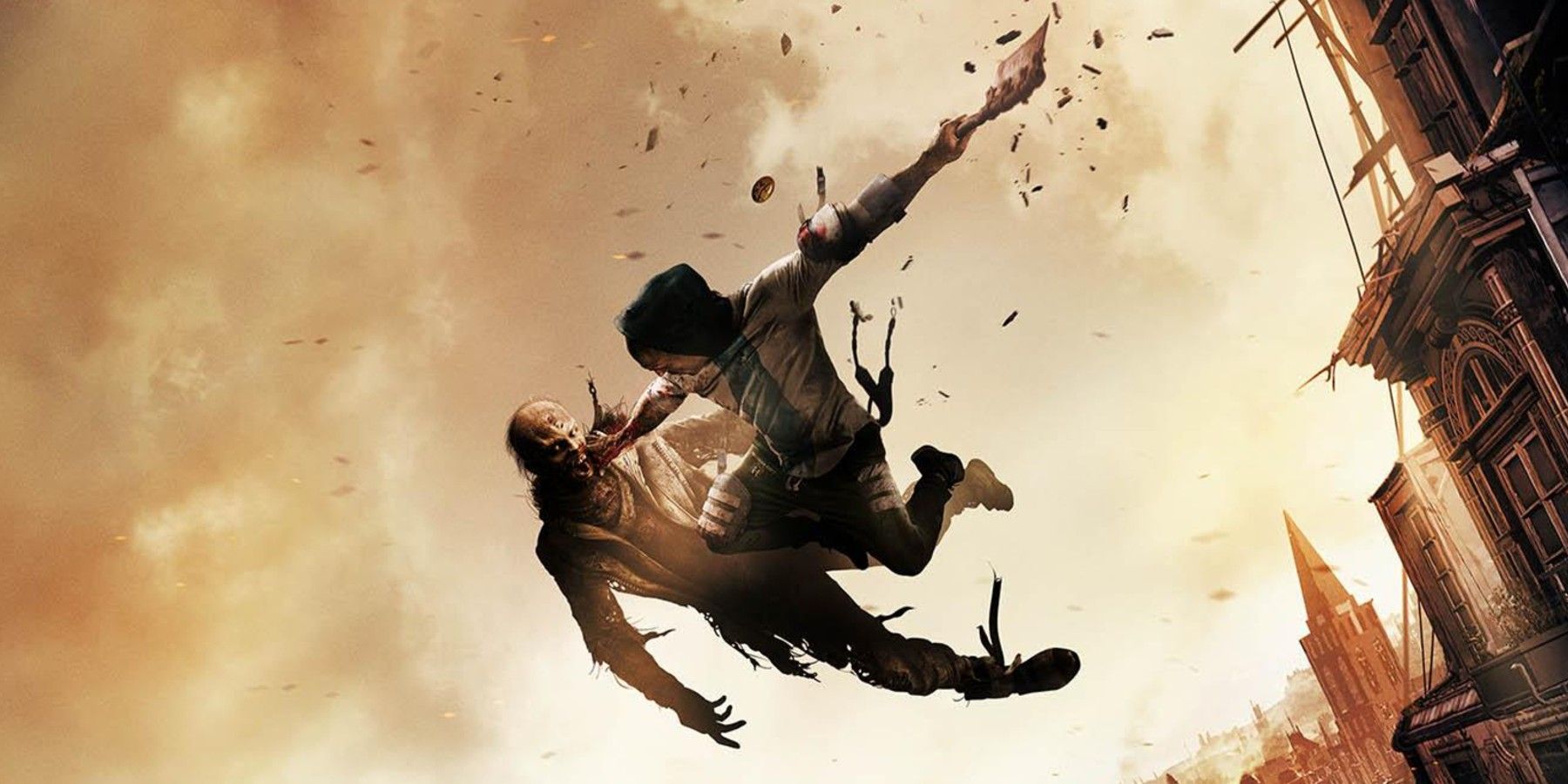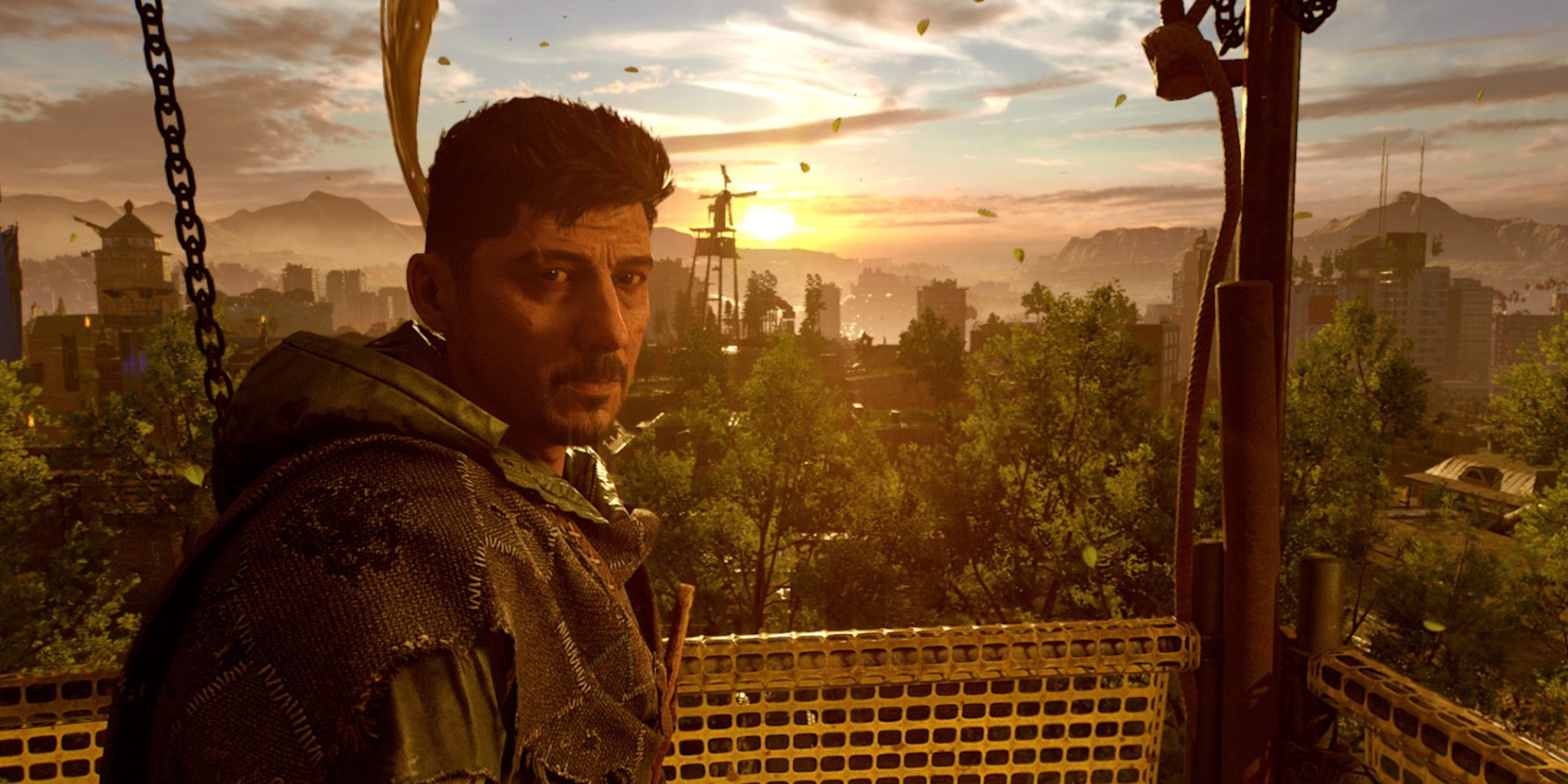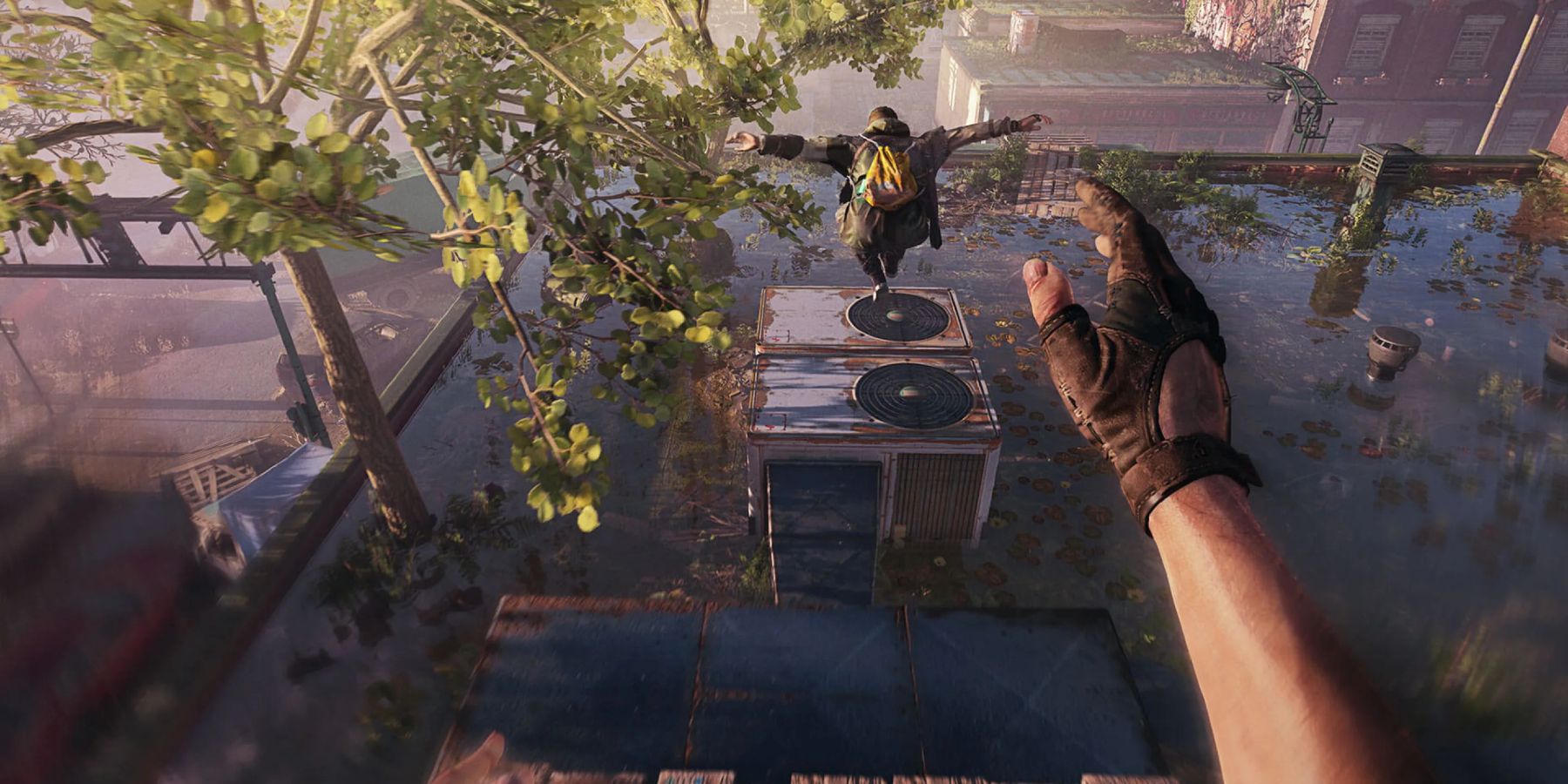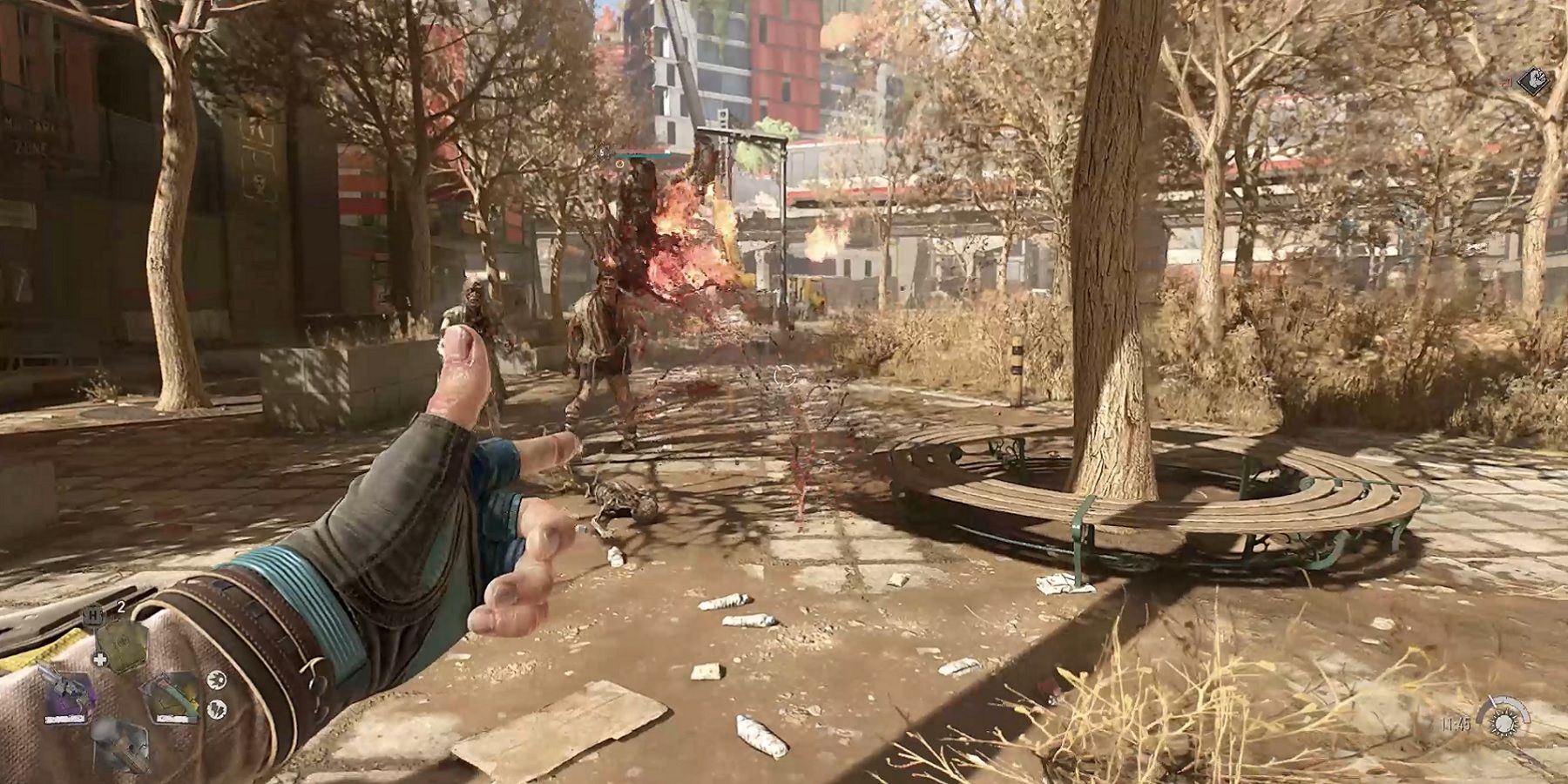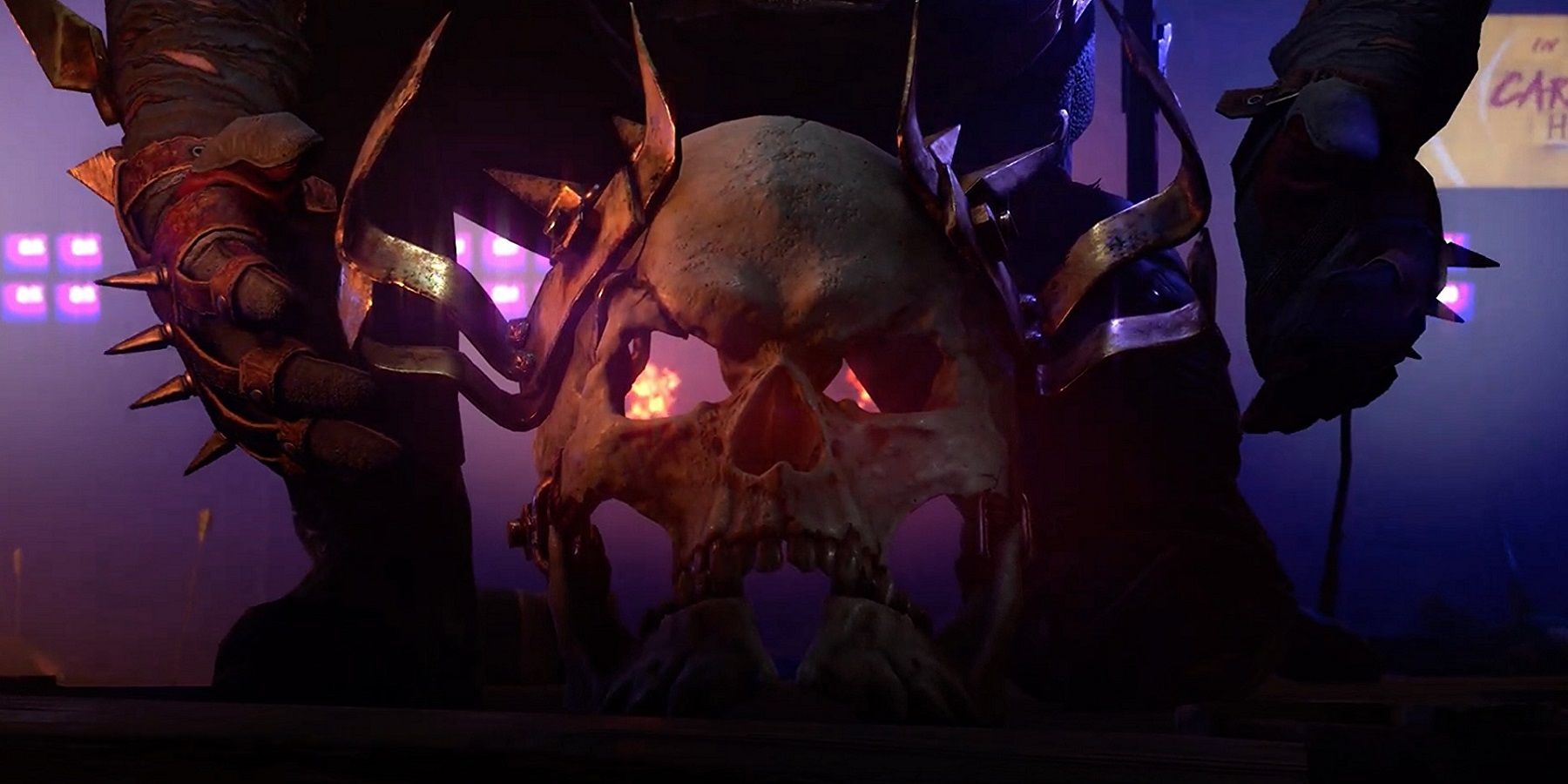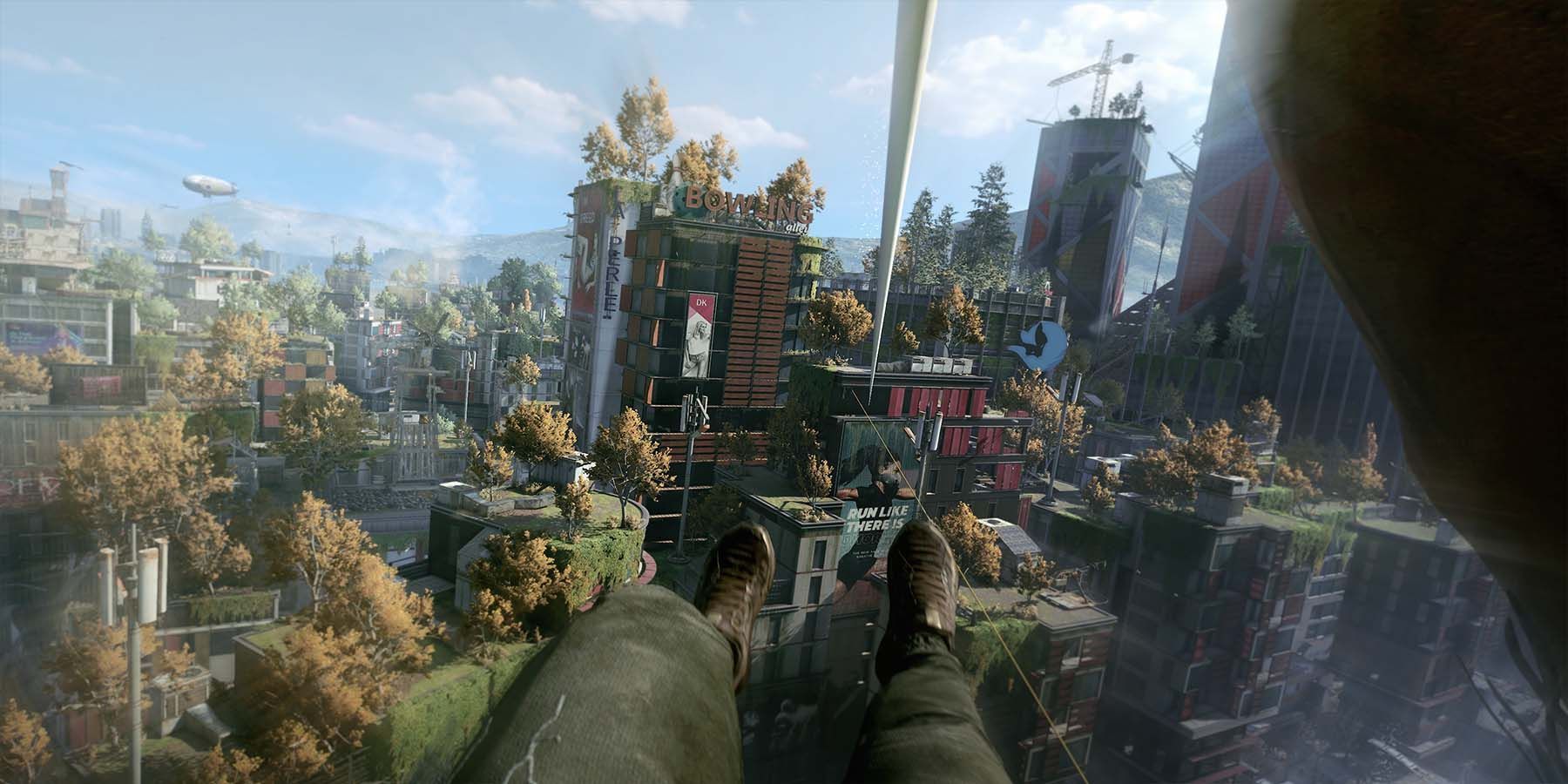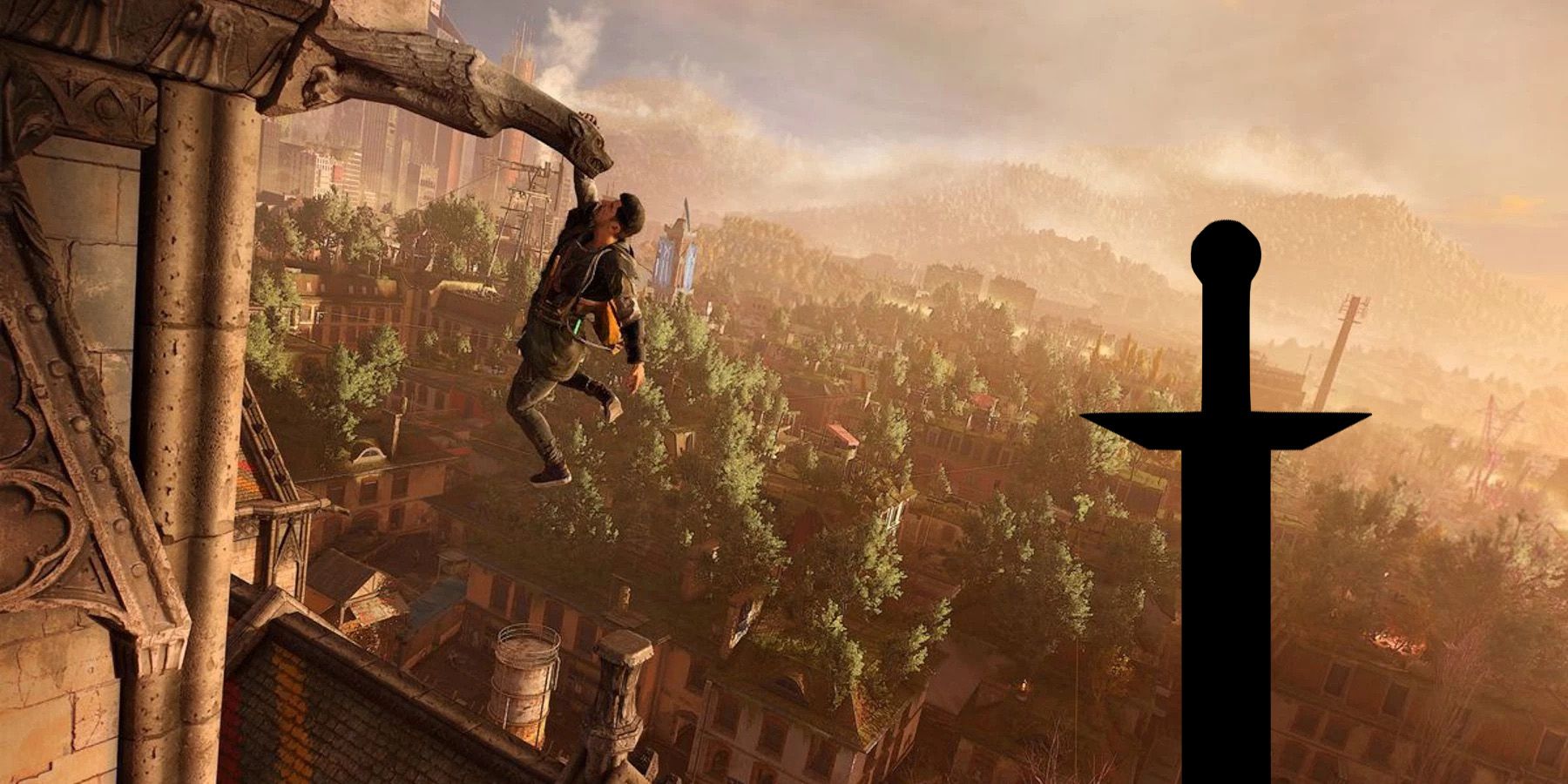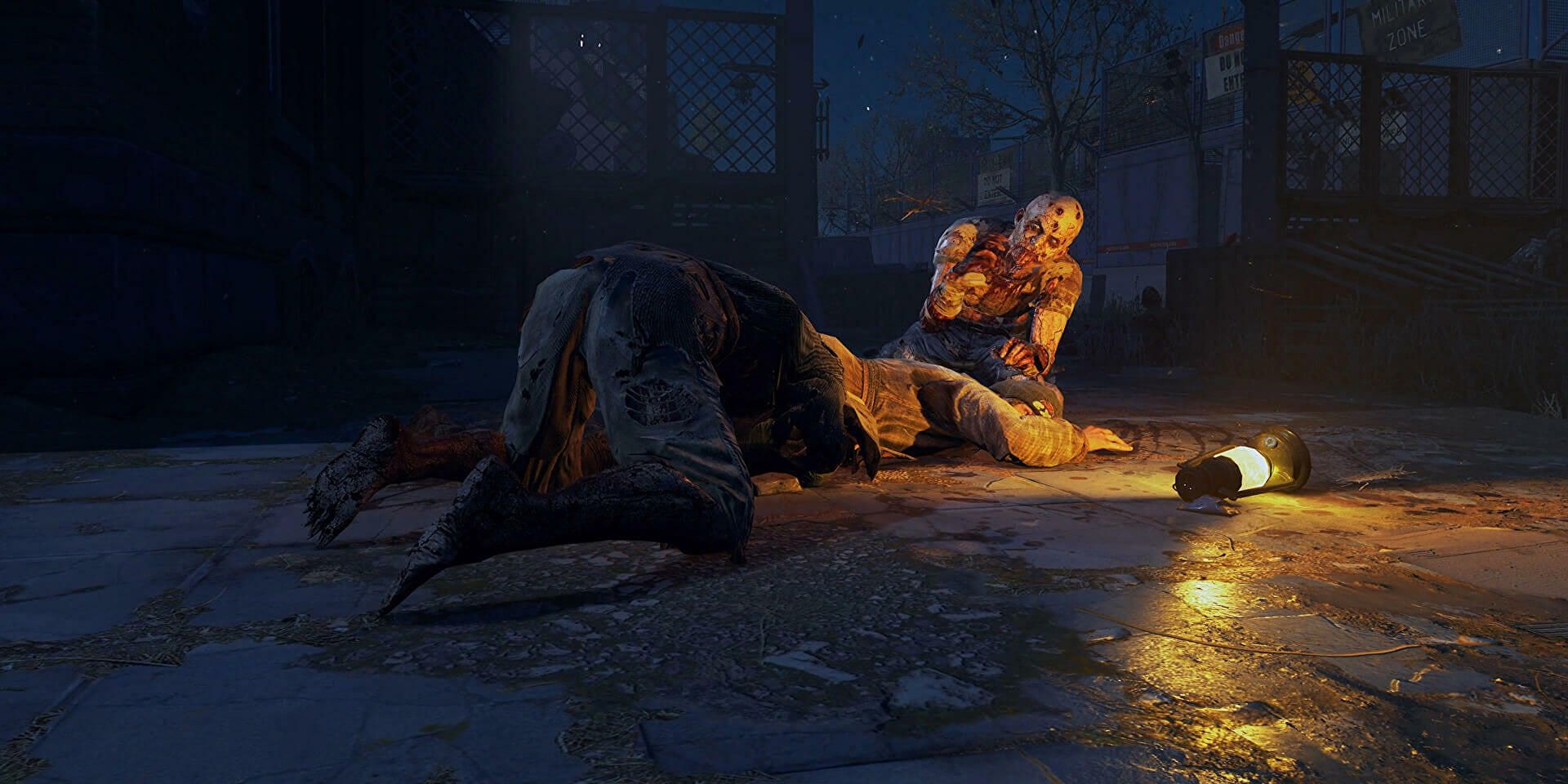Dying Light 2 has a jam-packed roadmap for 2023, including new events, major changes to gameplay systems, a new story DLC, and more. This all celebrates Dying Light 2's first anniversary and continues Techland's promise to support the game until at least 2027.
Game Rant recently spoke with Dying Light 2 franchise director Tymon Smektala about the planned changes, the vision for the game, the upcoming DLC, and much, much more. The following transcript has been edited for clarity and brevity.
Q: First off, congrats on the anniversary. What’s it like to look back over the past year of hard work?
A: Satisfying, hoping for a break, but I don't think that'll happen until 2027. Of course, I'm joking, I had my holidays, but it's like we're in a constant state of thinking about how we can make the game better. We've already announced we'll be supporting the game for a minimum of five years after the release, so at least until 2027, there will be plenty of work to do.
It has been a great ride for us. It was a success, both critically and commercially, and I think it was also quite well-received by our community. What we're most proud of is how we've stayed with our community, we have grown our community, and we have a lot of very, very dedicated, very opinionated players that are still with us. We want to work with those guys to make sure they're happy with the state of the game for this year and take it further for years three, four, and five.
Quite a long ride, an exciting ride, full of strong moments and events we did for our community, new content we have added, new enemies, new weapons, and new modes. A lot of this stuff with where we are, and we are waiting for the next year.
Q: Last time we spoke, you discussed how important fan feedback was for Dying Light 2’s future. How has that steered or changed plans over the past year?
A: We actually felt we needed to allow ourselves to experiment with the game a little over the first year because, even though we thought we knew what it means to be Dying Light when the first game was released, we weren't quite sure if the times hadn't changed so much that the expectations would be different in 2022. So, the first year of support was meant to be us experimenting with features, single-player stuff, and different DLCs (paid and free), but I think right now we know exactly what our community wants.
I think we have sync'd our target expectations, so now what we want to do is focus on the core systems of the game—the combat, the nighttime experience, and parkour—and tweak them, upgrade them, and add stuff to them to totally satisfy our players. When that happens, we'll provide players with DLC 2, the next DLC, which again in our way was made on community feedback. We heard voices saying people wanted an open-world narrative focused on zombies and infected, so this is exactly what the DLC will be.
And then, we'll start seeing Dying Light 2 in the future to what new areas, to what new places we can take the series. We already have quite a lot of those ideas, but we'll also listen closely to what the community has to say. In some ways, those guys—everyone who is in our community—all of those people are probably smarter than we are with knowing what Dying Light 2 should be. We'll definitely use their smarts, knowledge, and outlook to shape the game exactly to their needs.
Q: Previously, New Game Plus and Photo Mode were some of the most requested features of the game, but what is the most requested feature right now?
A: We have quite a long list of things people want, starting with the ability to skip the initial screens like the Techland logo when starting with the game, and even small things like that we have noticed. Looking at big things, at what's on top of the list, I would say it's the physicality of combat. I would also say it's the physicality of parkour. It seems we have made the parkour a little too "accessible" in the second game. People want to get back to the more grounded, more realistic approach of the first game. We also want to provide that with players, and of course, the nighttime experience.
It seems that our players want to get scared, our players want to feel the ultimate tension the night in Dying Light 2 can bring. So, this is what we want to give them. We want them to be more scared and terrified than they feel right now when playing the night experience. Also, to add to that, we want to give them the ability to play with the night systems even more and feel more in control of those systems. These are the big areas we'll be focusing on.
Another slightly smaller feature the community is requesting is gear transmog, so again on our list with the April update. I could really go on and on and on, we have a huge list of things. As I said, there are small things, medium-sized things, and big things, and we want to reassure our community that we are listening, and that we will also be brave enough to not hesitate the update the big systems of the game.
But we also plan to release a couple of smaller updates along the year, which will be addressing those small things I mentioned like the ability to skip all the initial screens when the game loads. This will happen at some point in the year.
Q: With gear transmog, could you speak to how it's going to work because a lot of games do transmog very differently?
A: Maybe not right now. We'd like players to focus on what happened yesterday with community update 2 and all the changes that happened there. We introduced legend levels, we introduced dynamic competitions, and I want players to focus on this and feedback if there is any way they think we can approve them.
We'll definitely be talking about how we want to approach everything this year as we move along. We want to do this before the release. We want to invite the audience and the community into our design process and reveal a little bit more about how we want to solve different challenges, different features, and how we want to implement them. We are also thinking about having closed betas for our inner circle of players who are the most engaged and interested in helping us shape the game. There are a couple of big ideas we have on the table. I think, with February, the community will see we'll invite them more and more into the conversation about the game.
We want our audience and our players to feel they have real input on how the game is shaped and where the game is going. As I said, the community and players are, from time to time, smarter than we are. This is something we definitely should use and channel into the game to make sure it's as good as possible.
Q: That's interesting. When it comes to game development, there is often a lot of secrecy aside from big marketing reveals. Would you have insight into why game development is so secretive, and what does bringing players in like this change about it?
A: To be honest, we actually had this conversation, and that's what we want to change this year. I think no one knows at this point. I think this is something that became a norm in the industry some time ago, and everyone follows it as if this is the only way to do it. I don't think this is actually the only way to do it. Because of everything that happens on the internet over the past few years, basically how the world changed over the last few years, we have seen a lot of studios adopting different approaches to development, a lot of changes. For example, things like big publishers skipping E3. This is something that'll be unmanageable at some point, but right now it's almost the norm.
There are other ways to reach the community and other ways to reach the players. There are others ways to listen to what the community has to say. To be honest, there is no big reason for game developers so secretive. I think there is one reason, maybe, if I had to point to one. I would have to say the game industry is a quite risky and tough business. You start working on a project, and this project takes you 3-4 years to complete. It costs a lot of money, and you want to surprise people to make sure no one else creates the same thing as you do, before you for example.
Maybe that's the reason for the secrecy, but it doesn't need to be that way. We plan to change that this year.
Q: During the Dying Light 2 1st anniversary video, you teased non-melee combat. Does this mean fans can expect more guns besides the one this year?
A: This is something I can only iterate on what I said yesterday, so we'll definitely be bringing new methods of fighting with the zombies. Actually, this is quite ironic that I am saying this after the last question.
Haha, no, I did not connect those questions in my head.
You still want to surprise your audience in some way. I think we are tiptoeing here to say something while not saying anything. At the same time, what I was saying before was about inviting the community more into the process of making decisions about the game, the future and the shape of the game. And I hope players see this year that we are sticking to that, and that they'll also help us and feel empowered to help us shape what Dying Light 2 can be.
Q: Over the past year, Dying Light 2 has had about 30 different events. How will player feedback be impacting that over the next year or so?
A: We have talked to our players about this, using different channels, and I think one very clear conclusion that comes from it is what players really expect from our events. What they expect is, for the duration of the event, we change the gameplay mechanics. They bought the game, and suddenly, it is a different game from the last month or so, sometimes even radically.
We feel we didn't do enough of this last year, and we really want to do more of it this year. I think if there will be a common "theme" running through all the events, it's that those will change the gameplay mechanics and tweak how the game works. The idea is that players will be loading into the game to experience something that they haven't before.
Q: I know you can't speak to many specifics regarding the upcoming DLC, but how would it compare to the Bloody Ties DLC? or perhaps Dying Light: The Following?
A: Bloody Ties was one of the experiments I mentioned. It was our take on the arena format. We tried to do some different with it, but I think the next DLC will be more traditional. It's a traditional take on what Dying Light DLC could be. It's a new region, it's open-world, and it's narrative-driven with a focus on the infected. I think you can already be shaping what it'll look like in the end, and the closer we get to the release date, we will reveal more. We don't want to hold off that information too much, because it's exciting to us, and we want our players to be excited as well. We just want to do things step by step.
It's very easy, as a human being and developer, to lose your focus in trying to do too many things at once. That's why we don't want to announce too much or do too much. At the same time, we have a plan we want to follow. We strongly believe this plan will make Dying Light 2: Stay Human an even better game than it is right now. It'll build up to the release of DLC 2.
Q: What do you think fans have wanted to see most out of parkour changes?
A: I will say they want to see parkour that is grounded and realistic. In Dying Light 2, we wanted to make parkour more accessible, and I think we have achieved this, actually. But if you started playing the series with Dying Light 2, it would be very hard to get back to the parkour from the first game. I agree we have lost some of the realism, so we want to get back to this stage.
We want to introduce a couple of things that will bring the feeling of the first game back, while improving some of the elements our community has pointed out in the current set-up. There are a couple of things we have already identified like the fluidity of movement, and how different moves connect together to create one seamless move through the geometry, so those are the things we will be trying to change.
I am a bit afraid actually because those changes might be quite difficult to explain in detail. There will be a lot of subtle animation changes, changes to the algorithm as to how our parkour works logically, but I am sure players will feel the difference when they play that. I think there will be a lot of videos on the internet highlighting the differences, and I really hope players will find those changes exciting.
Q: That sounds very complicated. Could you give us any insight as to how much work is going into this system?
The initial idea and version of this system was made by one guy over a couple of weeks, but it was just a prototype. It happened about three or four years before the actual release of Dying Light, the first one. Then, to make it the parkour of the first Dying Light, it took about 30 people like animators and programmers to take it to the level it was in the first game.
With Dying Light 2: Stay Human, the process was exactly the same. We took everything we had in the first game, and we doubled the number of parkour animations. We worked on it for three or four years with a very similar team of 20-30 people, just on this one feature. This is a really complex thing, which is based on high-level programming, a lot of animation work, a lot of physics simulation, a lot of work with the levels, with the geometry, and with everything set up in a level. Players don't usually realize this, but the objects they see on the screen are just part of what's actually there in the level. There are a lot of invisible elements that make the game work as it should.
It's really a huge undertaking, and that's why we're not rushing this. We decided we don't want to do small incremental increases with each update. What we want to do is focus on those core systems and take them up to the level, with the focused work of a bigger group of people. This way, the update is felt more strongly.
Q: What are Techland's plans to make the nighttime experience "Scarier"?
Definitely more atmosphere, darker nights, but I think the core information is that the roaming volatiles will make a return. Because of that, we will also need to change some things regarding the streets and the rooftops. What players can expect is the ability to dive deep into the streets of infected, but still be able to walk and sneak through if they are agile enough. Then, there will be volatiles as they remember them from the first game, with some changes we want to introduce to them. They'll be roaming the streets, looking around every corner, so I believe the atmosphere will become way more tense.
We also want to increase the motivation to actually go down to the street level with the volatiles during the night. We'll add some new sources of loot for players to pursue and some new activities they can do. The most important thing for us is to create the atmosphere of being surrounded by powerful, aggressive beasts that even if you're careful, if they see you, then the only thing you can do is basically run for your life and save yourself.
Q: You also mentioned some changes to the co-op experience. What can players expect of that this year?
Some things have happened already. First of all, there is cross-gen, and we are also looking at generally a lot of quality-of-life improvements. We have identified almost a hundred smaller issues we want to fix or improve just to make sure the experience is more fluid. We managed to go through about half of that list for the first update. For the next update, we don't want to say this will be the focus, but there are still a couple of things we want to change there as well. Generally, I think the co-op experience is more stable, more fun to play, and more free-flowing and natural for every participant in the group. Players can expect quite a few changes in that regard with the next update.
Q: Dying Light 2 still has years of support planned. What's something you'd personally love to see added in that time?
We want everyone, including ourselves, to focus on what's happening right now. We don't want to get too far ahead of ourselves because it's so easy to lose focus. We don't want to do that. We don't want our players to do that. We do have a vision though of where we want Dying Light 2 to be in 2027, we have this big idea of how we see the game in those five years, so without going into specifics, I will say I would like that vision to come fruition. I would that vision to become our reality because then I think this will a strong argument for Dying Light as a series to be one of the core, defining games in the zombie genre.
This is something we want to do. We want to be considered one of the greats of the zombie genre, and I hope we'll be able to achieve that with where we take Dying Light 2: Stay Human, as well as anything that may happen in the future.
Q: The zombie genre has been around forever, and there is sometimes some fatigue associated with zombie games. Do you think Dying Light 2 combats that sort of zombie fatigue?
I think so, but to be honest, I think zombie fatigue is more in saying than action. People will say they are zombie fatigued, but then you get a TV series, a comic book, or a game that's become successful even though everyone says, "hey, aren't you afraid you're just making the next zombie story, zombie show, or zombie game?" I think the zombie genre is quite strong and quite powerful, and I think it's broad enough that it has a lot of people interested in those kinds of stories and themes. But it's also niche enough that there's not an actual constant rush of new things happening, new media happening within that genre, so I think the interval of new games, new comic books, new TV series, and new movies is actually quite alright.
I think that's a constant. If you do something and you bring quality to what you do, then people will notice that and people will appreciate that. Creativity and quality have the potential to bring new people to the genre, and I will hope there will be people interested in those kinds of experiences because they hear about Dying Light as this very good, very creative game. They'll play it, they'll enjoy it, and they'll start looking at other pieces of media in the genre.
Q: Why do you think the zombie genre is so popular?
That's a very good question. If there is anyone on planet earth who knows this, please contact me.
What I think is that zombies are meant to put us humans in the most extreme of situations. I think a zombie apocalypse is stronger than a world disaster. It is the most extreme thing that can happen to humans on planet earth, maybe aside from a meteor about to hit Earth. I think this is interesting for people to peek at what would happen, and how we would react, if there was a zombie apocalypse.
There's a curiosity of seeing media representation and reflections of what would happen, so people think in their heads, "would I behave in the same way? What would I do in such extreme situations?" Personally, I think this is the key to why it's so popular because it is the ultimate test of humanity and what it means to survive, to carry our species forward. That's why it interests people and maybe even, in a way, it's more believable for people that there will be zombies than a meteor will hit the earth or aliens will invade. Maybe's that strange, but it feels more real than meteors or aliens.
Q: With all the changes over the past year over so, what would you say to someone who maybe played the game at launch and is coming back to check out all the new content this year?
I would say that so many things have changed and so many things have improved that it's almost like Dying Light 2.5. It's almost like a new game. It's a really good time to jump into the game and see what it has to offer. I think we have really managed to keep in contact with our community and find that common language with them. This really helps us improve the game, and it's really a blast to play. And I hope it's a lot better in the next few months. If you join now, you'll be able to experience something great and how it becomes amazing. I think it's time to give Dying Light a chance if you gave it a pass when it was first released.
Q: To my understanding, your Dead Island review led to you working at Techland, and after many years, Dead Island 2 drops in a few months. What do you personally think of everything shown for it so far?
I can't wait to play. Actually, I think everyone here at Techland just wants to play it and see how it can be developed in the hands of another studio. Also, knowing as a professional how difficult it is to make games, we really keep our fingers crossed for Dambuster Studios and for the game. We feel that both games are different, both games are unique, and even though they might look similar, they do a couple of thinks quite differently. Hopefully nothing but good luck for the launch of the game and hopefully it's a good one.
We know it had a rough development, so hopefully, that's not reflected in the final product. Fingers crossed, let's rock.
Yeah, that kind of goes back to what you were saying about the zombie genre.
Right. As I said, if you bring something unique, you are creative with how you approach the genre, and you bring quality, you'll succeed. No one says there's only one game that can succeed in any one genre, and there's no one TV series that can succeed in any given genre. There's space for more experiences, doing something similar, but as long as they do it differently with high quality, I believe there's no space for everyone.
[END]
Dying Light 2 is available now for PC, PS4, PS5, Xbox One, and Xbox Series X|S.

